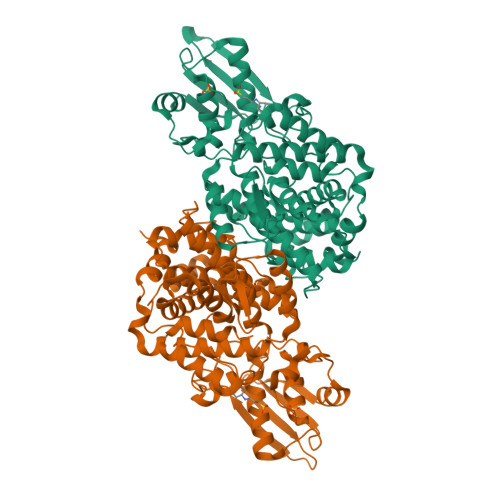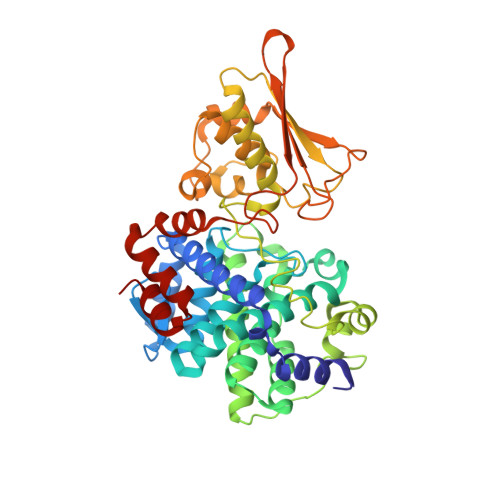Enzymatic reaction mechanism of cis-aconitate decarboxylase based on the crystal structure of IRG1 from Bacillus subtilis.
Chun, H.L., Lee, S.Y., Lee, S.H., Lee, C.S., Park, H.H.(2020) Sci Rep 10: 11305-11305
- PubMed: 32647315
- DOI: https://doi.org/10.1038/s41598-020-68419-y
- Primary Citation of Related Structures:
7BRA - PubMed Abstract:
Itaconate, which is formed by decarboxylation of cis-aconitate-an intermediate metabolite in the tricarboxylic acid cycle-has been used as a building block in polymer synthesis and is an important chemical in several biomedical and industrial applications. Itaconate is an immunometabolite with antibacterial, antiviral, immunoregulatory, and tumor-promoting activities. Recent focus has been on the role of itaconate in the field of immunology, with immune-responsive gene 1 (IRG1) being identified as the cis-aconitate decarboxylase responsible for itaconate production. We solved the structure of IRG1 from Bacillus subtilis (bsIRG1) and showed that IRG1 adopts either a closed or an open conformation; bsIRG1 was in the open form. A1 and A2 loops around the active site are flexible and can control the formation of the open and closed forms of IRG1. An in silico docking simulation showed that only the open form of IRG1 can accommodate the substrate. The most energetically favorable position of cis-aconitate in the active site of bsIRG1 involved the localization of C2 and C5 of cis-aconitate into the H102 region and H151 region of bsIRG1, respectively. Based on the structural study of bsIRG1, compared with IDS epimerase, and in silico docking simulation, we proposed two tentative enzymatic reaction mechanisms of IRG1, a two-base model and a one-base model.
Organizational Affiliation:
College of Pharmacy, Chung-Ang University, Seoul, 06974, Republic of Korea.




















